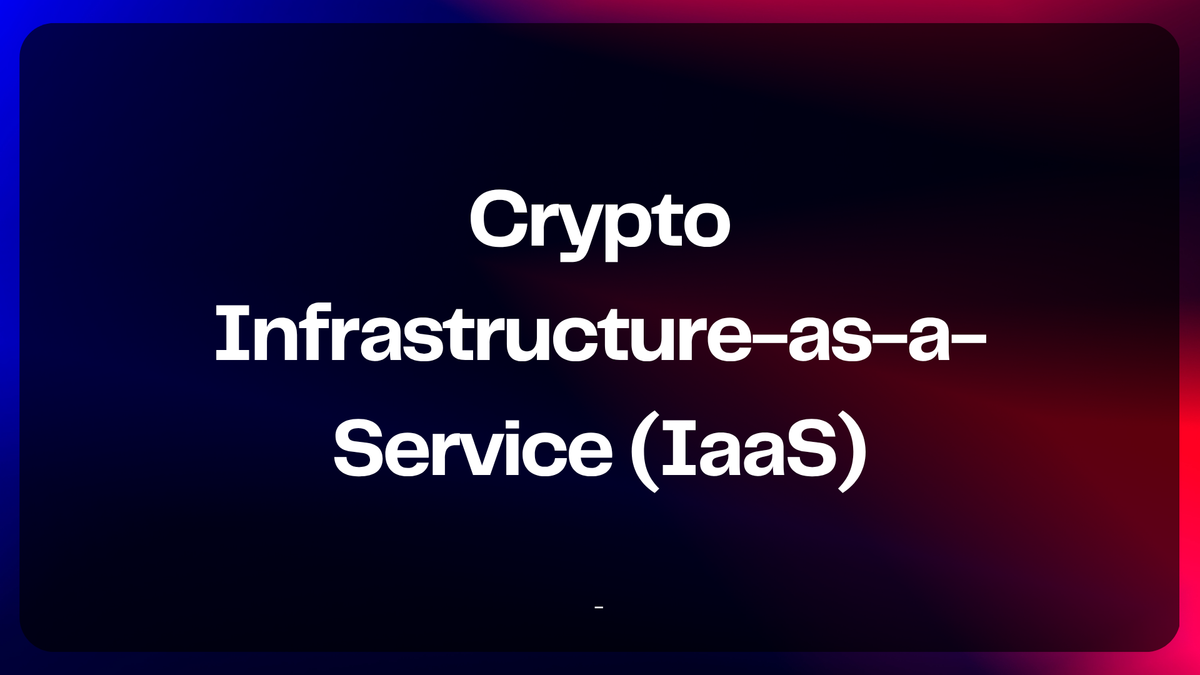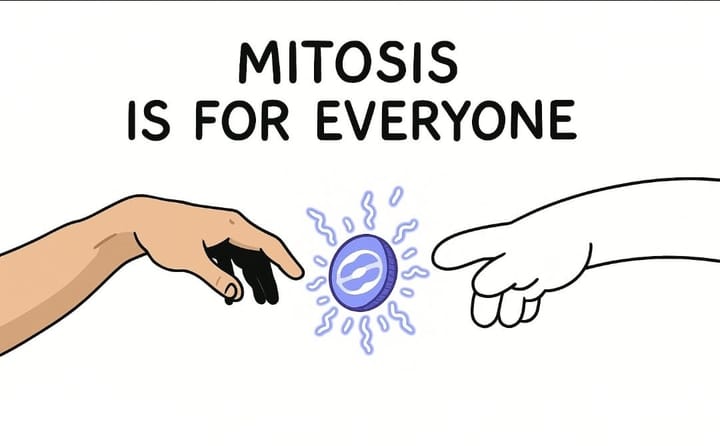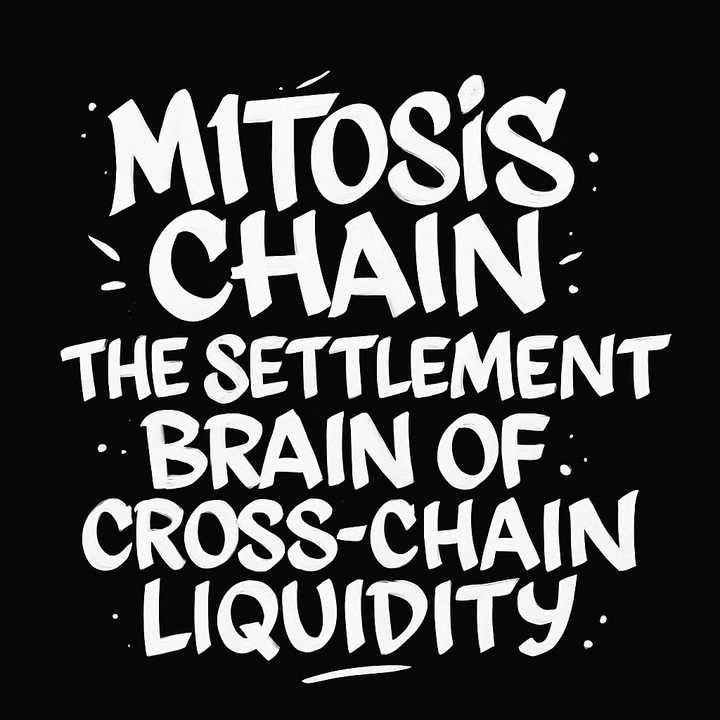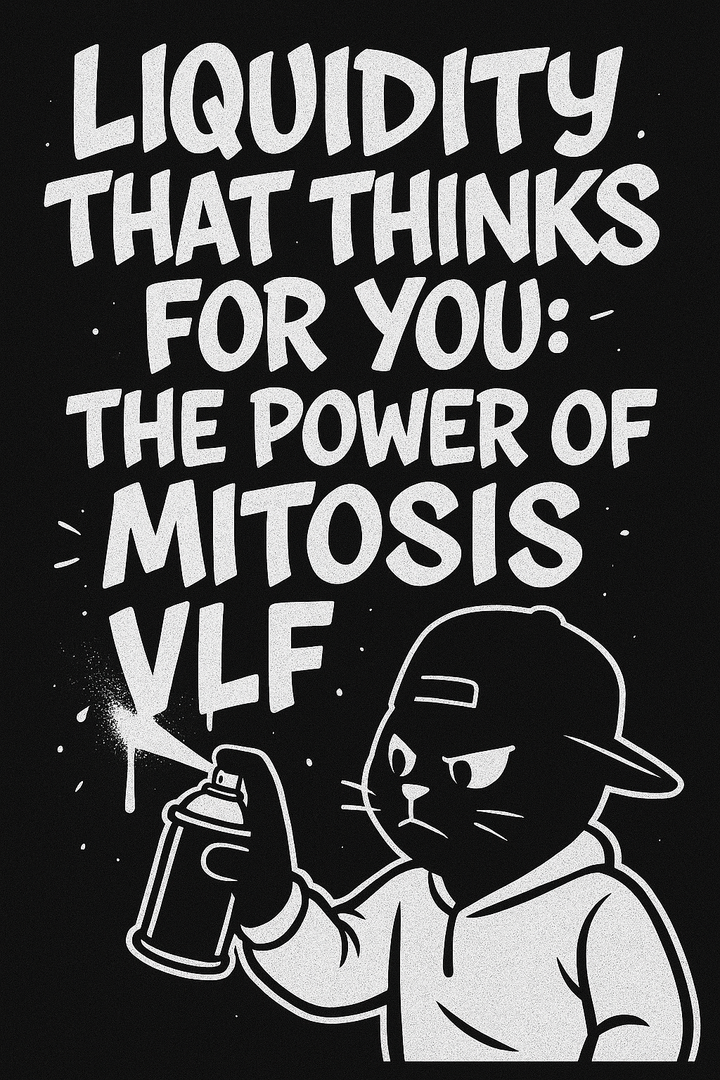Crypto Infrastructure-as-a-Service (IaaS): Powering dApps with RPC, Indexing, and Testnet Hosting

Decentralized applications (dApps) demand reliable, scalable, and secure connectivity to blockchain networks. Crypto Infrastructure-as-a-Service (IaaS) has emerged to fill this gap, offering managed remote procedure call (RPC) endpoints, on-chain data indexing, and testnet hosting. Leading projects such as Ankr, Alchemy, and Infura enable developers to focus on application logic rather than node maintenance, ensuring faster development cycles and robust production environments.
From Cloud IaaS to Crypto IaaS
Infrastructure-as-a-Service (IaaS) traditionally refers to virtualized computing resources, servers, storage, and networking, delivered over the internet, enabling organizations to outsource hardware management and scale on demand (GeeksforGeeks).
Crypto IaaS applies similar concepts to blockchain:
- RPC Endpoints: Gateways that let applications read blockchain state and broadcast transactions.
- Indexing Services: Systems that organize raw blockchain data into queryable APIs.
- Testnet Hosting: Environments mirroring production blockchains for safe testing without real-value assets.
By leveraging Crypto IaaS, blockchain teams avoid running and securing full nodes, drastically reducing operational overhead.
RPC Endpoints: Your Gateway to Any Blockchain
What Is a Blockchain RPC?
Remote Procedure Call (RPC) in crypto is a protocol that allows applications to communicate with blockchain nodes as if they were local processes. Developers use RPC endpoints to:
- Query account balances and smart contract state
- Submit and monitor transactions
- Fetch block details and event logs
Without running a node, applications send HTTP or WebSocket requests to a managed endpoint, which then relays them to the underlying blockchain network (CryptoNews).
Why RPC Endpoints Matter
- Reliability: High-availability endpoints with service-level agreements (SLAs) prevent downtime.
- Scalability: Auto-scaling infrastructure handles traffic spikes during major dApp launches.
- Security: Providers offer IP whitelisting, rate limits, and private RPCs to protect sensitive data.
- Developer Productivity: Instant access without node sync reduces time to proof-of-concept.
Top Crypto RPC Providers
| Provider | Networks Supported | Free Tier | Notable Features |
|---|---|---|---|
| Ankr | 30+ chains (Ethereum, Solana, BNB Chain) | 1,800 req/min | Decentralized node network, WebSockets, premium plans |
| Alchemy | Ethereum, Polygon, Arbitrum, Optimism, Solana | 300M compute units/mo | Enhanced APIs (Debug, Trace), gas manager, analytics |
| Infura | Ethereum, Polygon, Arbitrum, Optimism, IPFS | 100k req/day | IPFS gateway, enterprise DIN (Decentralized Infra Network) |
| QuickNode | 24+ chains (zkSync, Fantom, Avalanche…) | 50M API credits/mo | NFT API, Token API, real-time notifications |
- Ankr’s RPC API leverages a decentralized network of validators for global low latency.
- Alchemy’s Debug and Trace APIs surface deep insights directly from the node.
- Infura’s IPFS Gateway & API adds decentralized file storage alongside RPC.
Indexing Services: Turning On-Chain Data into Actions
What Is Blockchain Indexing?
Blockchains store transactions in raw, append-only ledgers, which aren’t optimized for fast, complex queries. Indexing services:
- Listen to new blocks and transactions
- Parse events, balances, and metadata
- Store organized data in databases or subgraphs
Developers then query this structured data via GraphQL or REST, unlocking features like transaction history, token balances, or NFT ownership without heavy client-side filtering.
Key Benefits for dApps
- Speed: Millisecond-level responses vs. seconds of raw log scanning.
- Custom Queries: Filter by event types, wallet addresses, or time ranges.
- Real-Time Streams: Push notifications when new on-chain events occur.
- Unified APIs: Cross-chain indexing under a single interface.
Leading Indexing Platforms
- The Graph: Decentralized protocol using subgraphs to power queries with GraphQL. Supports Ethereum and 90+ chains via community-built subgraphs.
- Covalent: Unified API across 100+ networks. Offers token balances, NFT metadata, DeFi positions, and more.
- Moralis: Real-time and historical data APIs, Webhooks, and “Streams” for on-chain event monitoring.
- Bitquery: Powerful GraphQL APIs for deep on-chain analysis, audit trails, and compliance use cases.
- Dune Analytics: Community-driven SQL interface with shared dashboards for DeFi, NFT, and protocol metrics.
Whether building a DeFi dashboard, NFT marketplace, or blockchain explorer, indexing services save months of backend development while ensuring data accuracy and performance.
Testnet Hosting: Safe Playgrounds for Innovation
Understanding Testnets
A testnet is an alternative blockchain network that mimics mainnet behavior but uses valueless tokens. Common Ethereum testnets include Goerli, Sepolia, and formerly Ropsten. Developers use testnets to:
- Deploy and debug smart contracts.
- Simulate large-scale load conditions.
- Trial network upgrades and consensus changes.
Since tokens on testnets are free, mistakes carry no real-value consequences, reducing risk and cost.
Why Testnet Hosting Is Critical
- Rapid Iteration: Immediate contract updates without gas fees.
- Community Stress Tests: Incentivized testnets reward users for uncovering vulnerabilities.
- Consensus Validation: Protocol teams can gauge network effects before production forks.
- Onboarding: New users learn wallet interactions and dApp flows safely.
Providers Offering Testnet Infrastructure
| Provider | Testnets Supported | Key Features |
|---|---|---|
| Ankr | Goerli, Sepolia, Mumbai, Fuji | One-click node deployment, monitoring |
| Alchemy | Goerli, Sepolia, Kovan, Rinkeby | Private testnet RPC, WebSocket debug |
| Infura | Goerli, Sepolia, Rinkeby, Ropsten | Public testnet endpoints, IPFS on testnet |
| QuickNode | Goerli, Mumbai, BNB Testnet, Fuji | Webhooks for new block, mempool alerts |
Testnets also rely on faucets, web services dispensing test tokens. For example, Ethereum’s Goerli faucet at http://chainlinkfaucet.com/ grants free ETH for testing.
Deep Dive: Ankr, Alchemy, and Infura in Action
Ankr: Decentralized RPC & Liquid Staking
Ankr started as a decentralized node network and evolved into full IaaS:
- RPC Endpoints: Geo-distributed, decentralized nodes with premium SLAs.
- Indexing Tools: GraphQL APIs and custom query services.
- Testnet Nodes: One-click Goerli, Sepolia, and Avalanche Fuji.
- Staking Infrastructure: Liquid staking for ETH, BNB, AVAX with aETHc/aBNBc derivatives (Ankr Blog).
Developers use Ankr’s SDKs to spin up nodes in minutes, while enterprises leverage its API for cost-effective global coverage.
Alchemy: Enhanced RPC & Developer Tooling
Alchemy bills itself as “developer’s supernode,” going beyond raw RPC:
- Enhanced APIs: Debug, Trace, and Gas Manager endpoints for transaction troubleshooting.
- NFT and Token APIs: Metadata, rarity scoring, and token balances via single interfaces.
- Subgraphs as a Service: Managed versions of The Graph with analytics and performance dashboards.
- Testnets: Private Rinkeby and Goerli with whitelisting and permissioned access.
Teams building high-reliability dApps rely on Alchemy’s monitoring suite, alerts, performance metrics, and real-time logs.
Infura: IPFS + RPC at Scale
Infura, part of ConsenSys, powers many mainstream dApps:
- Ethereum & Layer 2: RPC endpoints for Polygon, Arbitrum, Optimism, plus Ethereum mainnet and testnets.
- IPFS API & Gateway: Decentralized file storage with versioned content addressing.
- Decentralized Infra Network (DIN): Partnering with other providers to remove single points of failure.
- Enterprise SLAs: Custom throughput, analytics, and dedicated support.
Infura’s global footprint and long track record make it a go-to choice for DeFi applications and enterprise blockchain integrations.
Choosing the Right Crypto IaaS Provider
When selecting a Crypto IaaS partner, teams should evaluate:
- Network Coverage: Which blockchains and testnets are supported?
- Performance: Latency, throughput, and geographic node distribution.
- Reliability & SLA: Uptime guarantees, failover strategies, and support levels.
- Developer Tools: Debugging APIs, analytics dashboards, and SDKs.
- Security Controls: IP/domain whitelisting, API key rotation, and rate limiting.
- Cost Efficiency: Free usage tiers, pay-as-you-go rates, and overage policies.
- Ecosystem Integrations: Compatibility with indexing services, subgraph hosting, and Web3 libraries.
Most teams adopt a multi-provider strategy, using a primary RPC endpoint with a fallback alternative, plus a dedicated indexing service and on-demand testnet clusters.
Conclusion
Crypto Infrastructure-as-a-Service unifies three cornerstone capabilities, RPC endpoints, on-chain indexing, and testnet hosting into managed platforms that accelerate dApp development and ensure production reliability. Projects like Ankr, Alchemy, and Infura each bring unique strengths, from decentralized node networks to enhanced debugging APIs and IPFS gateways. By harnessing Crypto IaaS, developers sidestep the complexity of node operations, unlock real-time data insights, and rigorously test on alternative networks, all while maintaining focus on user experience and protocol innovation.
Whether you’re launching the next DeFi protocol, building an NFT marketplace, or architecting enterprise blockchain solutions, Crypto IaaS stands as the essential layer powering the future of decentralized applications.
References
- https://www.geeksforgeeks.org/cloud-computing/infrastructure-as-a-service-iaas/
- https://cryptonews.com/cryptocurrency/what-is-rpc/
- https://coincodecap.com/top-10-blockchain-indexing-services
- https://www.geeksforgeeks.org/ethical-hacking/what-is-a-testnet-how-it-works-features-examples/
- https://www.ankr.com/blog/top-blockchain-node-providers-web3/
- https://blog.logrocket.com/alchemy-vs-infura-which-node-provider-best/
- https://www.infura.io/
MITOSIS official links:
GLOSSARY
Mitosis University,
WEBSITE
X (Formerly Twitter)
DISCORD
DOCS



Comments ()